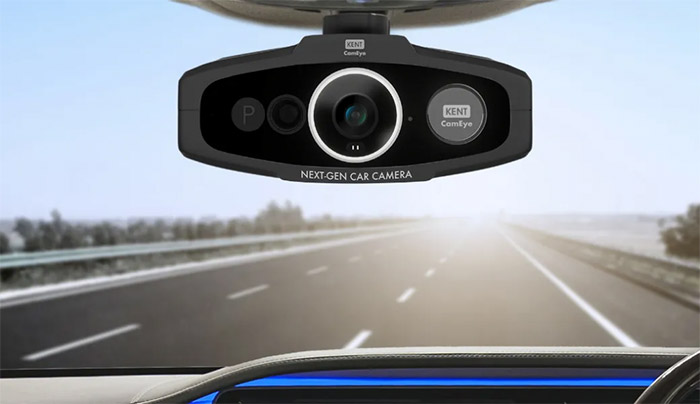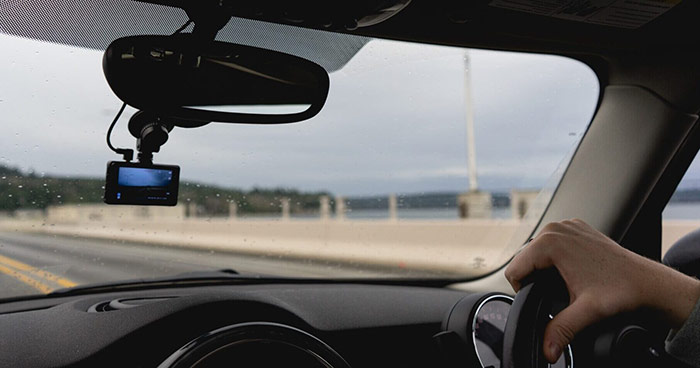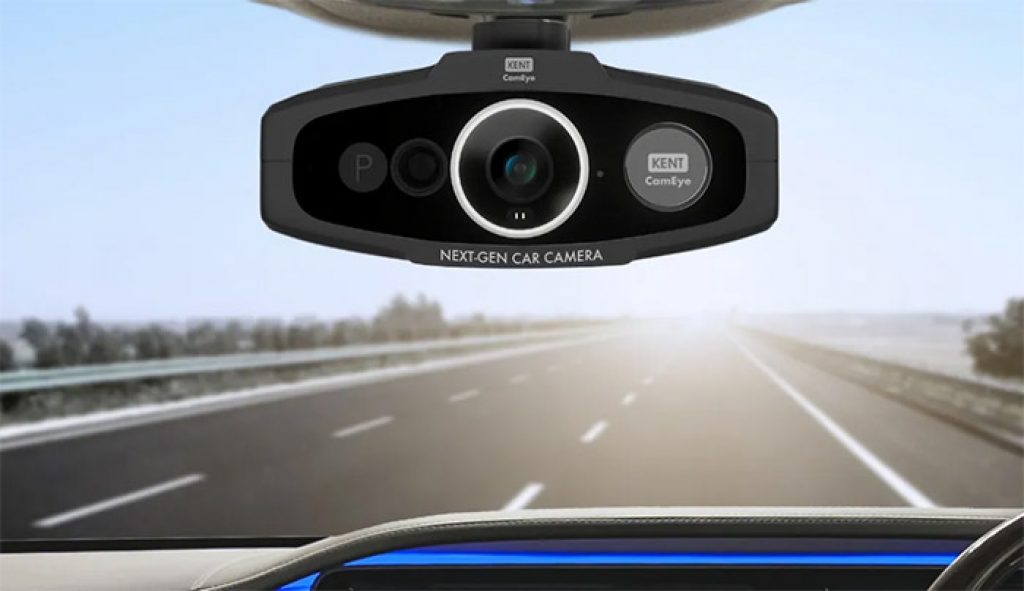If you are planning to purchase an in-car dash cam or already own one, you might have come across the term G-sensor technology. The G-sensor is one of the essential features of modern dash cams, but many people don’t fully understand how it works and its benefits. In this article, we will explain G-sensor technology in detail, how it works, and why it’s crucial for your safety on the road.
1. Introduction
In-car dash cams are becoming increasingly popular as they provide evidence in the event of an accident and protection against insurance fraud. The G-sensor technology in these dash cams is what makes them stand out from other types of cameras. The G-sensor can detect sudden changes in acceleration or movement, which allows the camera to start recording automatically.

2. What is a G-sensor?
The G-sensor, also known as an accelerometer, measures changes in acceleration along the X, Y, and Z-axis. It can detect both positive and negative acceleration, which is critical in determining if there has been a collision or sudden movement. The G-sensor can measure up to 10 Gs (gravity force), and when it detects a sudden change in acceleration, it triggers the camera to start recording.

3. How Does G-Sensor Technology Work in Dash Cams?
Acceleration Detection
The G-sensor in a dash cam detects changes in acceleration, which means that it can differentiate between normal driving and sudden movements. For example, if a car suddenly brakes or swerves to avoid an accident, the G-sensor will detect the sudden movement and trigger the camera to start recording.

Collision Detection
The G-sensor technology can also detect a collision. If a car is hit from behind or in front, the G-sensor will detect the sudden change in acceleration and automatically start recording. This feature is crucial in providing evidence in the event of an accident.
Incident Detection
G-sensor technology can also detect other incidents such as a hit-and-run or vandalism. If someone hits your car while parked, the G-sensor will detect the sudden change in movement and start recording.
4. Benefits of G-Sensor Technology in Dash Cams
Automatic Recording
The G-sensor in a dash cam triggers automatic recording, which means that you don’t have to worry about turning on the camera every time you get into your car. It starts recording as soon as it detects sudden movements, making it easier to collect evidence in the event of an accident.
Evidence Collection
In the event of an accident, the footage recorded by the dash cam can be used as evidence. The G-sensor technology ensures that the camera starts recording as soon as there is a sudden change in acceleration, which means that you will have footage of the accident.
Protection Against Insurance Fraud
Insurance fraud is a growing problem, and it’s essential to protect yourself against it. With the G-sensor technology in your dash cam, you can provide evidence of what happened during an accident or incident. This evidence can protect you from false claims and help you avoid paying for damages that you didn’t cause.
5. Considerations When Buying a Dash Cam with G-Sensor Technology

When shopping for a dash cam with G-sensor technology, there are a few things you should consider:
Sensitivity Settings
Some dash cams allow you to adjust the sensitivity of the G-sensor, which is useful if you want to reduce the number of false triggers. For example, if you frequently drive on bumpy roads, you might want to lower the sensitivity so that the camera doesn’t start recording unnecessarily.
Storage Capacity
G-sensor technology can quickly fill up your dash cam’s storage space, especially if you drive frequently. Make sure to choose a dash cam with enough storage capacity to accommodate your needs. You may also want to consider a dash cam with a loop recording feature, which overwrites old footage automatically when the storage space is full.
Price
Dash cams with G-sensor technology can range from affordable to expensive, depending on the features and quality. It’s essential to set a budget before shopping and consider the features that are most important to you.
6. Best Dash Cams with G-Sensor Technology
There are many dash cams available in the market with G-sensor technology. Here are some of the best ones:
- Garmin Dash Cam 66W
- VAVA Dash Cam
- Thinkware F800 Pro
- Vantrue N2 Pro
- BlackVue DR750S
7. How to Properly Install and Use a Dash Cam with G-Sensor Technology
Proper installation is crucial to ensure that your dash cam with G-sensor technology works correctly. Here are some tips:
- Follow the manufacturer’s instructions carefully.
- Choose a location that provides a clear view of the road.
- Make sure the dash cam is securely mounted to avoid it from falling off while driving.
- Ensure the camera is angled correctly to capture the necessary footage.
- Test the dash cam after installation to ensure it’s recording correctly.
8. Common Issues with G-Sensor Technology in Dash Cams
While G-sensor technology in dash cams is useful, there are some common issues to be aware of:
- False triggers – The G-sensor can sometimes trigger recording when there’s no actual incident, such as when driving on a bumpy road.
- Insufficient storage – G-sensor technology can quickly fill up your dash cam’s storage space, especially if you drive frequently.
- Sensitivity – Some G-sensors can be too sensitive, which can lead to excessive recording and drain the battery quickly.
9. Conclusion
In conclusion, G-sensor technology is an essential feature of modern dash cams, and it’s crucial to understand how it works and its benefits. With G-sensor technology, you can capture footage of incidents automatically, which can protect you from insurance fraud and provide evidence in the event of an accident. When purchasing a dash cam with G-sensor technology, consider the sensitivity settings, storage capacity, and price to ensure you choose the best one for your needs.
10. FAQs
[wpsm_accordion][wpsm_accordion_section title=”Do all dash cams have G-sensor technology?”]No, not all dash cams have G-sensor technology. You need to check the specifications before purchasing.[/wpsm_accordion_section][wpsm_accordion_section title=”Can I turn off the G-sensor on my dash cam?”]Yes, some dash cams allow you to turn off the G-sensor, but it’s not recommended as it reduces the effectiveness of the dash cam in recording important events.[/wpsm_accordion_section][wpsm_accordion_section title=”What is loop recording, and how does it work?”]Loop recording is a feature that allows the dash cam to overwrite old footage when the storage space is full. This ensures that the camera always has space to record new footage.[/wpsm_accordion_section][wpsm_accordion_section title=”Can G-sensor technology detect hit-and-run incidents?”]Yes, G-sensor technology can detect hit-and-run incidents as it can detect sudden changes in movement or acceleration.[/wpsm_accordion_section][wpsm_accordion_section title=”Is it legal to use a dash cam with G-sensor technology?”]Yes, it’s legal to use a dash cam with G-sensor technology, but you should check the laws in your state or country to ensure you comply with the regulations. In summary, G-sensor technology is a crucial feature of modern dash cams, and it’s essential to understand how it works and its benefits. With G-sensor technology, you can capture footage of incidents automatically, which can provide evidence in the event of an accident or protect you from insurance fraud. When purchasing a dash cam with G-sensor technology, consider the sensitivity settings, storage capacity, and price to ensure you choose the best one for your needs.[/wpsm_accordion_section][/wpsm_accordion]



